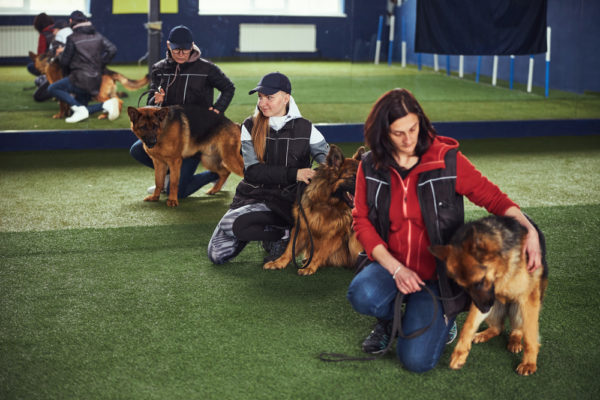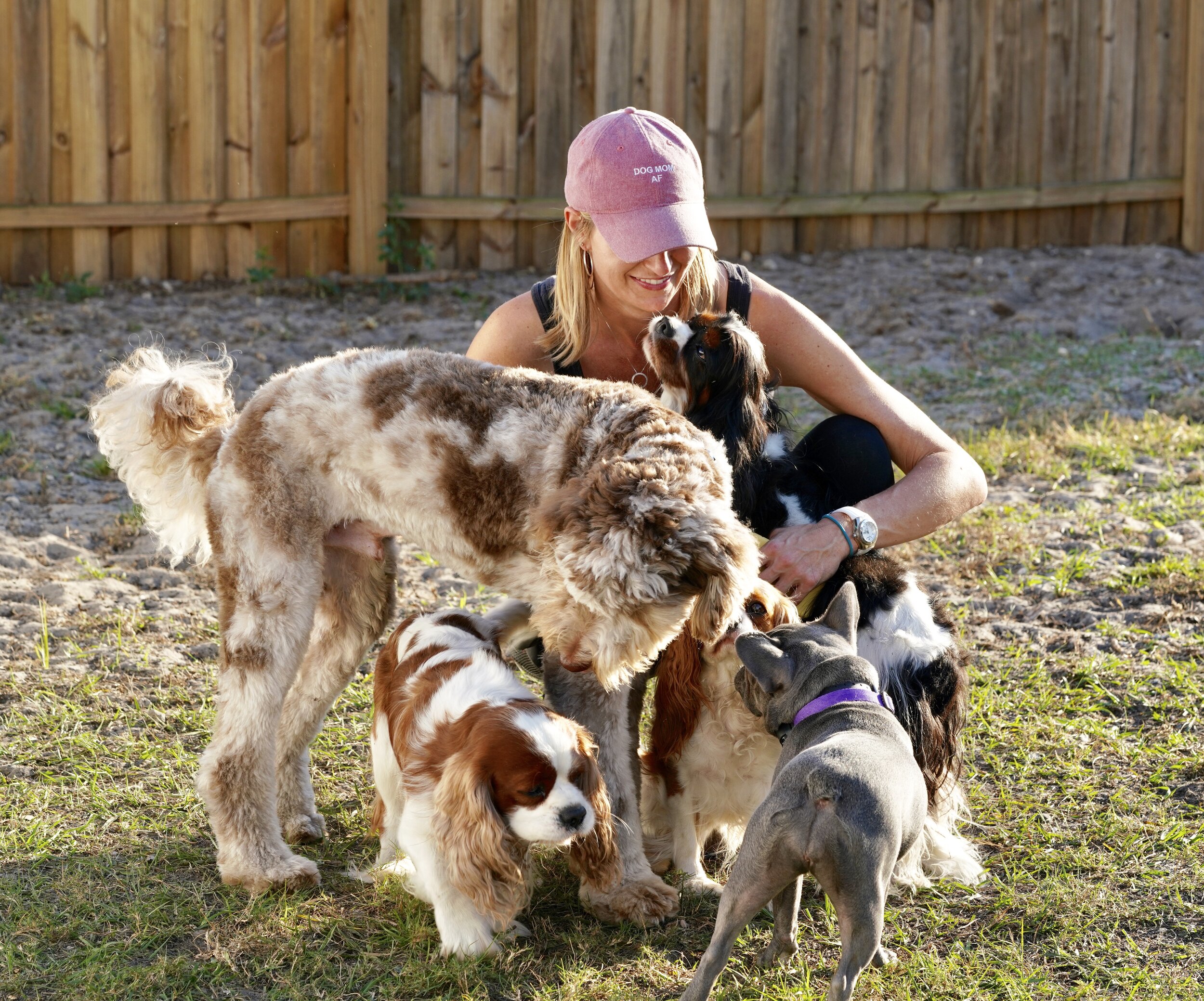Why Consistency is Key in Dog Training for Long-Term Success
Why Consistency is Key in Dog Training for Long-Term Success
Blog Article
Novice's Guide to Effective Dog Training in your home
Effectively training a pet at home requires a nuanced understanding of canine behavior and reliable communication methods. Developing clear training goals, using high-quality rewards, and maintaining uniformity across family members are critical aspects. Integrating training right into everyday regimens can improve both engagement and retention.
Understanding Canine Actions
Understanding pet actions is necessary for effective training and promoting a harmonious partnership in between humans and their canine companions. Dogs connect mostly via body language, vocalizations, and face expressions, making it important for proprietors to interpret these signals precisely. Recognizing actions such as tail wagging, growling, or trembling can provide understandings into a canine's emotion and objectives.

Common behavioral concerns, such as aggression, anxiousness, or extreme barking, usually originate from misconceptions or unmet requirements. Observing and addressing these problems without delay can protect against escalation and guarantee a favorable training experience. By cultivating a deep understanding of canine habits, proprietors can customize their training approaches to fit their canine companions, inevitably bring about a mannerly and pleased pet.
Vital Training Tools
A well-equipped training area can dramatically enhance the performance of pet dog training in your home. Necessary training devices make sure that both the pet and the fitness instructor can take part in productive sessions that foster understanding and bonding.

Spending in a strong leash and a comfortable, well-fitting collar or harness is important for safety and control. These tools aid establish boundaries and ensure the pet remains safe and secure throughout training. In addition, a marked training area, devoid of distractions, aids concentration for both the dog and the fitness instructor.
Educating aids such as training pads, cones, or dexterity equipment can additionally enhance the experience by introducing selection and difficulties. Last but not least, having a notebook or electronic application for tracking progression can be important, permitting you to note successes and areas for improvement. Making use of these crucial tools will certainly produce a favorable training atmosphere and lay the foundation for efficient discovering.
Developing an Educating Regimen
Developing a regular training regimen is necessary for reliable pet dog training in the house. A well-structured regular not only aids in strengthening preferred habits but additionally offers your canine with a complacency and predictability. To develop an effective training routine, begin by determining specific training goals, such as standard commands, leash walking, or house-breaking.
Choose a marked time daily for training sessions, ideally when your canine is responsive and sharp. Procedure ought to be brief, around 5 to 15 minutes, to preserve emphasis and avoid exhaustion. Consistency in timing and environment will enhance your canine's knowing experience.
Incorporate training into daily activities to strengthen skills. Practice commands during walks or nourishment, which incorporates learning right into natural regimens. Furthermore, remain adaptable and readjust the regular as necessary, fitting your pet's energy degrees and mood.
Positive Reinforcement Strategies
Favorable support techniques are fundamental to efficient pet dog training, promoting wanted actions via incentives as opposed to penalty. This approach uses favorable stimuli, such as deals with, appreciation, or play, to motivate canines to duplicate certain actions. The foundation of this approach is timing; benefits need to be offered immediately adhering to the preferred actions to produce a clear organization.
When applying favorable reinforcement, it is necessary to pick benefits that are encouraging for your pet dog. High-value treats, such as small items of hen or cheese, can be particularly reliable during training sessions. Additionally, varying the rewards can keep your dog's passion and enthusiasm.
Beginning Visit Website with basic commands, like "rest" or "stay," and slowly progress to extra complicated jobs. Uniformity is vital; guarantee that all member of the family make use of the same commands and benefit systems to prevent complication.
Furthermore, it is crucial to stay client and avoid irritation. Canines, like human beings, discover at their own pace. By promoting a helpful training atmosphere through favorable reinforcement, you can enhance your pet dog's understanding experience while strengthening the bond between you and your furry buddy, preparing for successful training results.
Common Educating Challenges
While training a pet dog at home can be a fulfilling experience, it usually comes with a collection of usual difficulties that can examine both patience and consistency. One widespread problem is diversion. Canines might come to be quickly sidetracked by noises, activities, or even fragrances in their environment, making it difficult to maintain their emphasis during training sessions.
An additional obstacle is disparity in commands and support. It can confuse the canine and hinder development if household members make use of various signs or rewards. Developing a unified technique is important for effective communication.
Furthermore, canines can experience irritation or tension, specifically if they do not comprehend what is expected of them. This can result in undesirable behaviors, such as eating or barking.
Finally, the timing of support is vital (Dog training). Delayed rewards can decrease the effectiveness of favorable support, as pets might fall short to attach the behavior with the reward
Getting rid of these obstacles requires dedication, clear communication, and an organized training strategy. Acknowledging and dealing with these common obstacles will lead the way for a more delightful and effective training experience at home.
Final Thought
Finally, successful pet training at home demands a detailed understanding of canine behavior and effective communication techniques. By establishing clear weblink training goals and utilizing top notch deals with alongside positive reinforcement, the training process comes to be much more gratifying for both the pet and the trainer. Perseverance, uniformity, and adaptability are crucial elements that help with understanding. Ultimately, integrating training into everyday routines improves the bond between pet dog and owner, making the experience both efficient and delightful.
Establishing a consistent training routine is important for efficient dog article training at home.Positive support strategies are essential to reliable canine training, advertising preferred habits through incentives instead than punishment (Dog training). By promoting an encouraging training setting with favorable reinforcement, you can improve your canine's learning experience while reinforcing the bond between you and your furry buddy, laying the groundwork for effective training outcomes
In conclusion, effective canine training at home necessitates a comprehensive understanding of canine behavior and reliable communication approaches. By developing clear training goals and utilizing high-quality deals with together with positive support, the training procedure ends up being extra fulfilling for both the fitness instructor and the pet.
Report this page